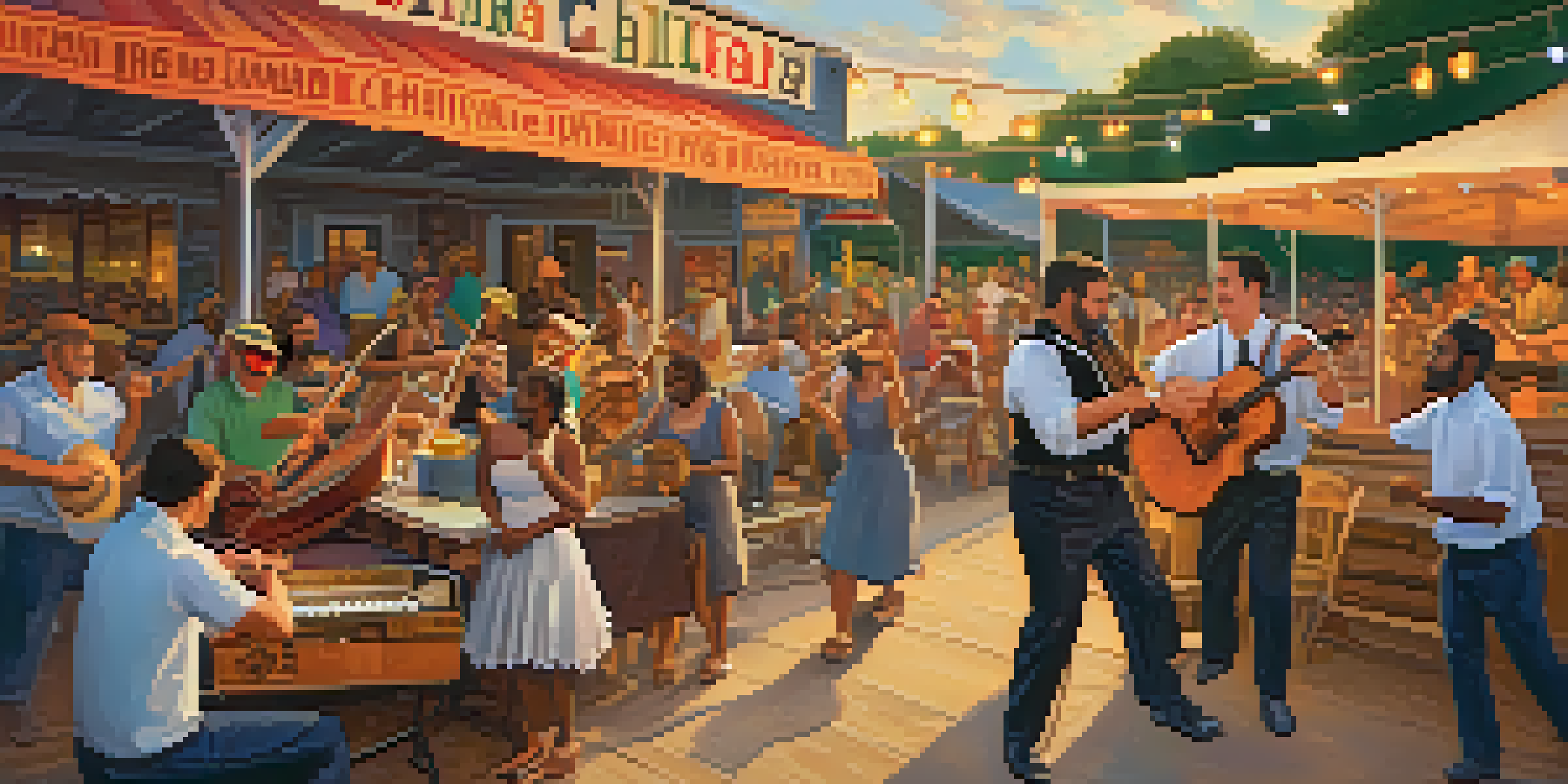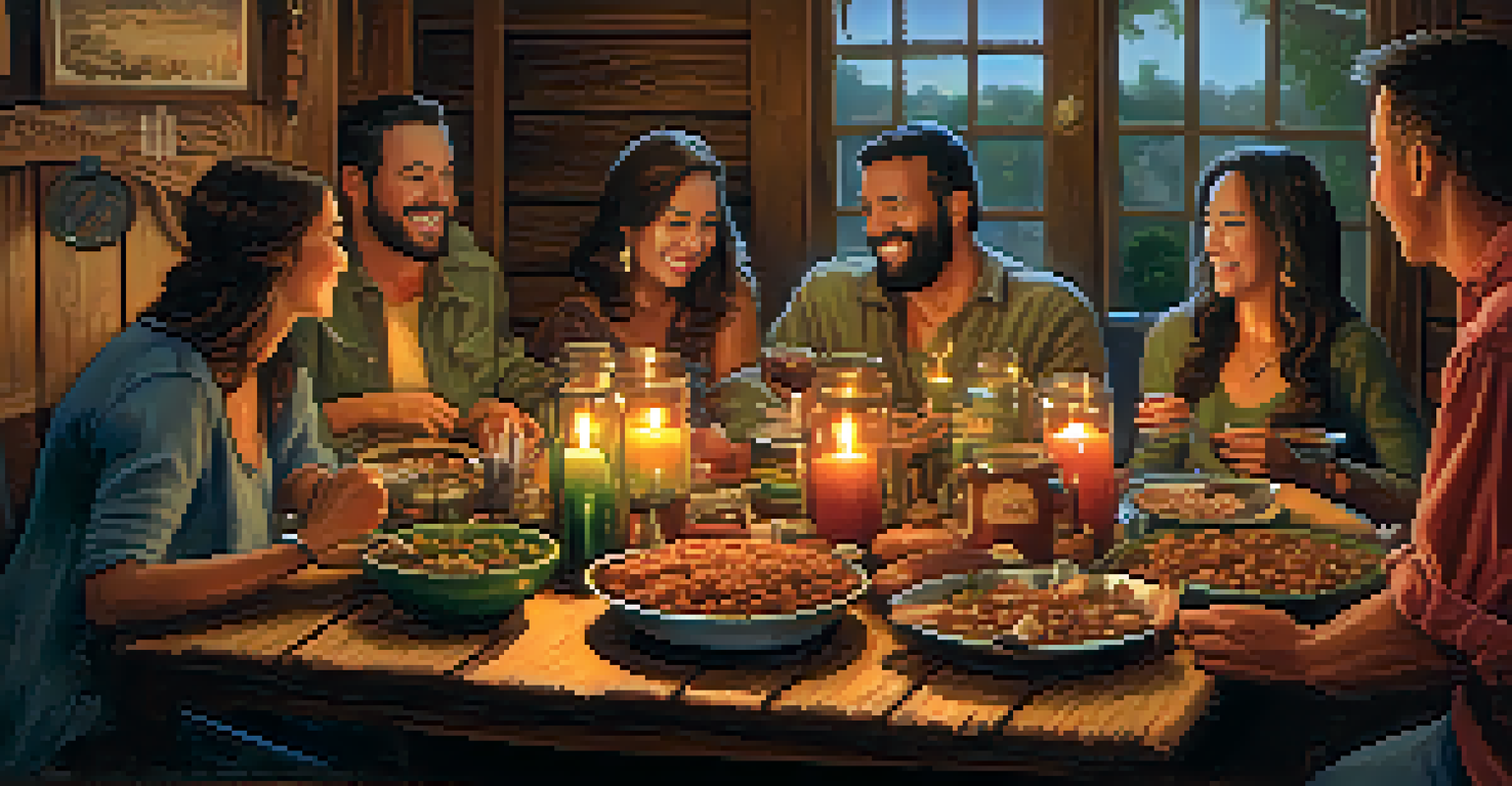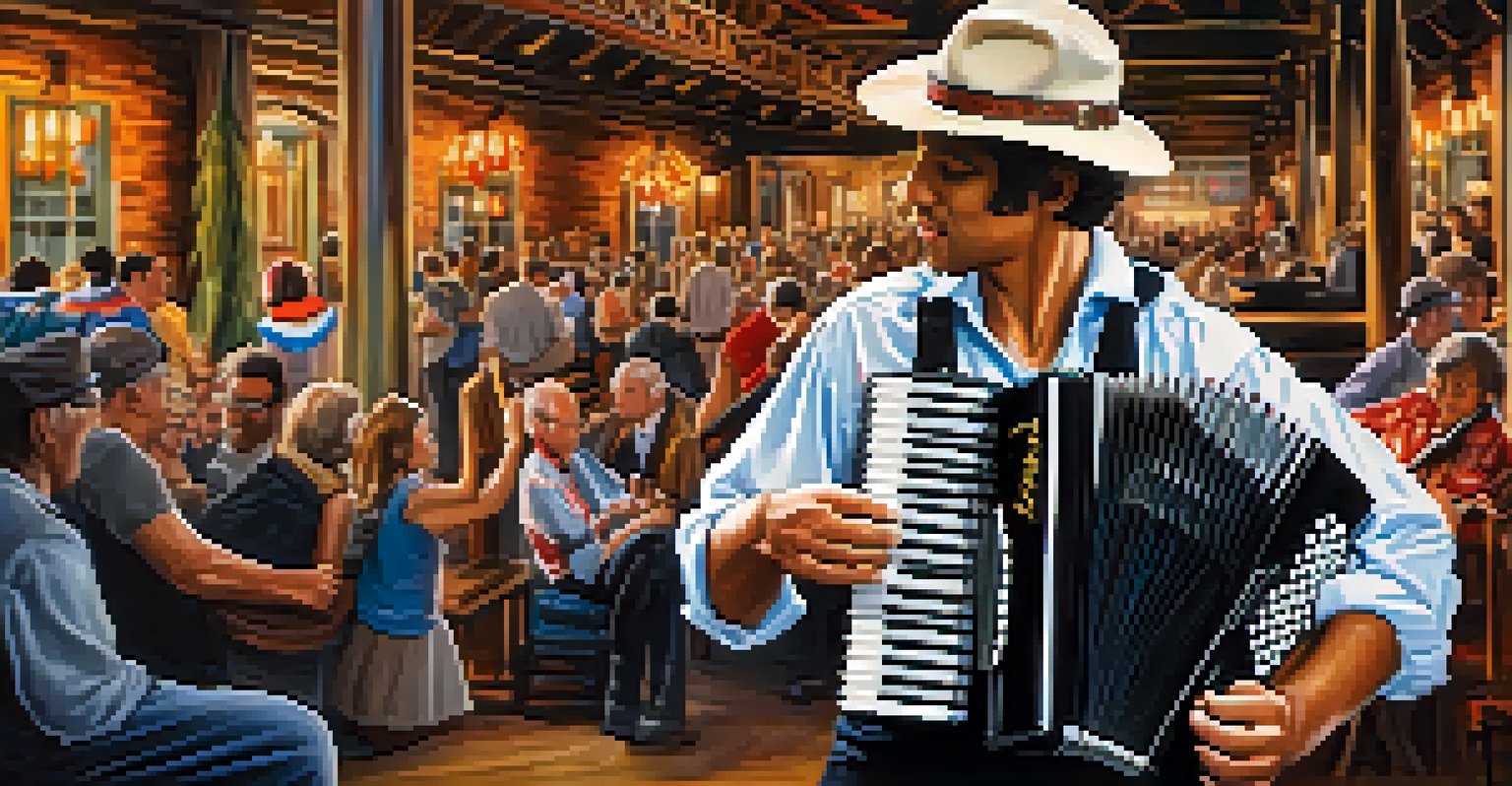Cajun and Creole Music: The Heartbeat of Louisiana's Culture

Understanding Cajun and Creole: More Than Just Music
Cajun and Creole music is deeply woven into the cultural fabric of Louisiana, reflecting the diverse backgrounds of its people. Cajun music, with roots in French-speaking Acadian settlers, features a lively blend of fiddle, accordion, and triangle, creating a sound that's both energetic and inviting. In contrast, Creole music, shaped by African, Spanish, and Native American influences, incorporates a wider array of instruments and rhythms, showcasing its rich multicultural heritage.
Music is the universal language of mankind.
This musical duo doesn’t just entertain; it tells stories of love, hardship, and community. For example, many Cajun songs narrate tales of rural life, often with a humorous twist, while Creole music might delve into the complexities of identity and heritage. These narratives resonate with listeners, forming a strong emotional connection that transcends generations.
In essence, understanding Cajun and Creole music means appreciating the history and experiences that shape Louisiana's culture. It’s a celebration of resilience and joy, embodying the spirit of a community that has thrived through adversity. Together, these genres offer a unique soundtrack that captures the essence of life in Louisiana.
The Instruments That Bring Cajun and Creole Music to Life
At the heart of Cajun and Creole music are the instruments that create its vibrant sound. The accordion, a staple in Cajun music, adds a joyful bounce, while the fiddle weaves melodies that make it nearly impossible not to dance. In Creole music, you might encounter a broader range of instruments, including the tambourine and guitar, which contribute to its distinct rhythms and styles.

These instruments are not just tools; they are extensions of the musicians’ souls, each note reflecting their passion and heritage. For instance, the percussive clapping and foot-stomping often heard in live performances highlight the communal aspect of this music, inviting everyone to join in the celebration. This interactive element is what makes Cajun and Creole music so special—it’s about shared experiences and collective joy.
Cajun and Creole Music's Cultural Roots
Cajun and Creole music reflects the diverse cultural heritage of Louisiana, telling stories of community, resilience, and identity.
Moreover, the way these instruments are played can vary significantly from one musician to another, adding layers of individuality to the music. This diversity creates a rich tapestry of sound, making every performance a unique experience. Whether in a lively dance hall or an intimate gathering, the spirit of Louisiana’s culture shines through these instruments.
The Evolution of Cajun and Creole Music Through the Years
Cajun and Creole music have evolved significantly over the years, adapting to changing cultural landscapes while retaining their core essence. In the early 20th century, radio broadcasts and recordings helped popularize these genres beyond local communities, introducing them to a wider audience. This exposure facilitated a fusion with other musical styles, including rock, jazz, and even country, leading to innovative new sounds.
Without music, life would be a mistake.
As the music evolved, so did the themes and lyrics, reflecting contemporary issues and experiences. Today’s artists often incorporate elements of modern life, addressing topics such as migration, environmental changes, and the struggle for cultural preservation. This contemporary twist keeps the music relevant, allowing new generations to connect with their heritage while also embracing modern influences.
Despite these changes, the heart of Cajun and Creole music remains unchanged. It continues to be a source of pride, community, and cultural identity for many Louisianans. As we look to the future, this music will undoubtedly keep evolving, but its roots will always remind us of the rich history and traditions that shaped it.
The Role of Festivals in Celebrating Cajun and Creole Music
Festivals play a crucial role in celebrating and preserving Cajun and Creole music, serving as vibrant gatherings for both locals and visitors. Events like the New Orleans Jazz & Heritage Festival and the Cajun & Zydeco Festival showcase a variety of musicians, from seasoned veterans to up-and-coming artists, allowing them to share their talents with enthusiastic audiences. These festivals not only highlight the music but also the food, art, and culture of Louisiana.
During these lively celebrations, attendees can immerse themselves in the full experience of Cajun and Creole culture. From dancing to the infectious rhythms to enjoying traditional dishes like gumbo and jambalaya, festivals offer a feast for the senses. This creates an atmosphere of unity and joy, where people from diverse backgrounds come together to appreciate the richness of Louisiana’s heritage.
Instruments Bring Music to Life
The unique instruments used in Cajun and Creole music not only create vibrant sounds but also embody the passion and heritage of the musicians.
Additionally, festivals provide a platform for cultural exchange, where musicians can collaborate and innovate. They help to foster a sense of community, ensuring that the stories and sounds of Cajun and Creole music continue to thrive. In this way, festivals serve as both a celebration of the past and a catalyst for the future of Louisiana’s musical landscape.
The Influence of Cajun and Creole Music on Modern Genres
Cajun and Creole music have had a significant influence on various modern musical genres, shaping the sound of artists across the globe. Elements of these traditional styles can be heard in rock, country, and even pop music, demonstrating their versatility and appeal. For instance, musicians like Zachary Richard and BeauSoleil have blended Cajun rhythms with rock elements, creating a contemporary sound that resonates with wider audiences.
Moreover, the infectious energy of Cajun and Creole music has inspired countless collaborations, leading to unique fusions that push the boundaries of traditional genres. Artists from different backgrounds often draw on these rich musical traditions, bringing fresh perspectives while paying homage to their roots. This cross-pollination of ideas not only keeps the music alive but also introduces it to new fans.
As a result, Cajun and Creole music continue to evolve, influencing and being influenced by the ever-changing landscape of the music industry. This dynamic relationship enriches both the traditional and modern music scenes, proving that the heartbeat of Louisiana’s culture is as vibrant as ever. Ultimately, it underscores the idea that music is a living, breathing entity that adapts while holding onto its core identity.
Cajun and Creole Music: A Cultural Reflection
Cajun and Creole music serve as a mirror reflecting the complexities of Louisiana’s cultural identity. The blending of different musical traditions symbolizes the state’s history of migration and cultural exchange, showcasing the resilience of its people. Each note played and word sung tells a story of survival, adaptation, and celebration, making the music a vital part of Louisiana’s narrative.
Furthermore, this music highlights the importance of community and connection, emphasizing the role of family and friends in everyday life. Songs often celebrate gatherings, love, and shared experiences, reinforcing bonds within the community. This sense of belonging is a cornerstone of Cajun and Creole culture, reminding us of the power of music to bring people together.
Festivals Preserve Musical Traditions
Festivals play a vital role in celebrating Cajun and Creole music, fostering community and cultural exchange while ensuring these traditions thrive.
In a world that often feels fragmented, the sounds of Cajun and Creole music offer a sense of unity and belonging. They remind us of our shared humanity, encouraging us to celebrate our differences while finding common ground. As we listen to these vibrant melodies, we are invited to join in the ongoing story of Louisiana’s rich cultural heritage.
Preserving Cajun and Creole Music for Future Generations
Preserving Cajun and Creole music is essential for maintaining the cultural identity of Louisiana, ensuring that future generations can connect with their roots. Various organizations and initiatives are dedicated to documenting and promoting these musical traditions, providing resources for young musicians to learn and develop their skills. This commitment to preservation helps keep the music alive and relevant in an ever-changing world.
Educational programs often include workshops, festivals, and community events that encourage participation in Cajun and Creole music. By engaging young people in these traditions, we foster a sense of pride and ownership over their cultural heritage. This hands-on approach empowers the next generation to carry the torch, ensuring that the stories and sounds continue to resonate.

Moreover, the rise of digital platforms has made it easier to share Cajun and Creole music with a global audience. Musicians can now reach fans far beyond Louisiana, spreading awareness and appreciation for these vibrant traditions. As we move forward, embracing both preservation and innovation will be key to ensuring that Cajun and Creole music continues to thrive, enriching lives for generations to come.